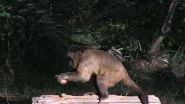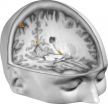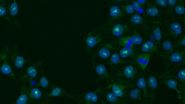(Press-News.org) The latest Special Issue from ecancermedicalscience is dedicated to the memory of our late friend, Dr Mario Sideri.
The Special Issue, "Prevention of gynaecological cancers: in memory of Mario Sideri," consists of nine articles centred around Dr Sideri's favoured research topic.
Dr Sideri was one of the first doctors in the world to identify the connection between the human papillomavirus (HPV) and cervical cancer.
He served as the Director of the Preventive Gynecology Unit at the European Institute of Oncology (IEO) in Milan from 1994 until his tragic death in June 2014.
"The IEO has lost a figure of international reputation, as well as a doctor much loved for his extraordinary intelligence and humanity," said Prof Umberto Veronesi, founder of the IEO, at his passing.
"Sideri helped to develop the principles and methods for early diagnosis and prevention of gynaecologic cancers, and was committed to effectively changing the clinical history of cancer for women."
Dr Sideri was an author and interviewee for ecancermedicalscience, where his loss was deeply felt.
The production of this Special Issue serves as both a memorial of a life well spent, and a review of the field he helped to pioneer.
"Sideri was a fierce believer in the strengths of primary and secondary prevention," wrote the Special Issue Guest Editors, Dr Susanna Chiocca and Dr Maria Teresa Sandri of the IEO, Milan, Italy.
To complement Dr Sideri's scope of research interests, the nine original research papers within the Special Issue cover a range of topics, from screening techniques to the use of the preventive HPV vaccine in gynaecological cancers.
"This special issue reflects Sideri's dedication to cancer prevention, and encompasses contributions from many of his colleagues and close friends," Drs Chiocca and Sandri conclude.
It is our hope that this Special Issue will keep the memory of our valued colleague alive, while looking towards a future with fewer cancer patients.
INFORMATION:
Reference:
Special Issue: Preventive Gynaecology
In memory of Dr Mario Sideri, 1953-2014
Guest Editors: S Chiocca and MT Sandri
http://ecancer.org/special-issues/8-preventive-gynaecology.php
Ghittoni Raffaella, Accardi Rosita, Chiocca Susanna and Tommasino Massimo (2015) The role of human papillomaviruses in carcinogenesis ecancer 9 526
Franceschi Silvia (2015) Past and future of prophylactic ablation of the cervical squamocolumnar junction ecancer 9 527
Costa Silvano, Venturoli Simona, Origoni Massimo, Preti Mario, Mariani Luciano, Cristoforoni Paolo and Sandri Maria Teresa (2015) Performance of HPV DNA testing in the follow-up after treatment of high-grade cervical lesions, adenocarcinoma in situ (AIS) and microinvasive carcinoma ecancer 9 528
Ravenda Paola Simona, Zampino Maria Giulia, Fazio Nicola, Barberis Massimo, Bottiglieri Luca and Chiocca Susanna (2015) Human papillomavirus in anal squamous cell carcinoma: an angel rather than a devil ecancer 9 529
Schiffman Mark and Wentzensen Nicolas (2015) Issues in optimising and standardising the accuracy and utility of the colposcopic examination in the HPV era ecancer 9 530
Preti Mario, Igidbashian Sarah, Costa Silvano, Cristoforoni Paolo, Mariani Luciano, Origoni Massimo, Sandri Maria T, Boveri Sara, Spolti Noemi, Spinaci Laura, Sanvito Francesca, Preti Eleonora P, Falasca Adriana, Radici Gianluigi and Micheletti Leonardo (2015) VIN usual type--from the past to the futureecancer 9 531
de Sanjosé Silvia, Ibáñez Raquel, Rodríguez-Salés Vanesa, Peris Mercè, Roura Esther, Diaz Mireia, Torné Aureli, Costa Dolors, Conet Yolanda, Canet Yolanda, Falguera Gemma, Alejo Maria, Espinàs Josep Alfons and Bosch F Xavier (2015)Screening of cervical cancer in Catalonia 2006-2012 ecancer 9 532
Origoni Massimo, Cristoforoni Paolo, Carminati Guia, Stefani Chiara, Costa Silvano, Sandri Maria Teresa, Mariani Luciano and Preti Mario (2015) E6/E7 mRNA testing for human papilloma virus-induced high-grade cervical intraepithelial disease (CIN2/CIN3): a promising perspective ecancer 9 533
Mattoscio Domenico, Casadio Chiara, Fumagalli Marzia, Sideri Mario and Chiocca Susanna (2015) The SUMO conjugating enzyme UBC9 as a biomarker for cervical HPV infections ecancer 9 534
When it comes to cracking nuts, wild bearded capuchin monkeys are more skilled than anyone had given them credit for, according to researchers who report new findings in the Cell Press journal Current Biology on April 30.
The monkeys are known to use stone "hammers" to crack nuts. The new study shows that the monkeys are quite careful about the amount of force delivered to those nuts. They adjust the force applied with each strike based on the condition of the nutshell, making it less likely that they'll end up smashing the tasty kernel inside.
"Wild bearded capuchin ...
Bats are masters of flight in the night sky, capable of steep nosedives and sharp turns that put our best aircraft to shame. Although the role of echolocation in bats' impressive midair maneuvering has been extensively studied, the contribution of touch has been largely overlooked. A study published April 30 in Cell Reports shows, for the first time, that a unique array of sensory receptors in the wing provides feedback to a bat during flight. The findings also suggest that neurons in the bat brain respond to incoming airflow and touch signals, triggering rapid adjustments ...
Neuroscientists have perfected a chemical-genetic remote control for brain circuitry and behavior. This evolving technology can now sequentially switch the same neurons - and the behaviors they mediate - on-and-off in mice, say researchers funded by the National Institutes of Health. Such bidirectional control is pivotal for decoding the brain workings of complex behaviors. The findings are the first to be published from the first wave of NIH grants awarded last fall under the BRAIN Initiative.
"With its new push-pull control, this tool sharpens the cutting edge of ...
The feeling of being inside one's own body is not as self-evident as one might think. In a new study from Sweden's Karolinska Institutet, neuroscientists created an out-of-body illusion in participants placed inside a brain scanner. They then used the illusion to perceptually 'teleport' the participants to different locations in a room and show that the perceived location of the bodily self can be decoded from activity patterns in specific brain regions.
The sense of owning one's body and being located somewhere in space is so fundamental that we usually take it for granted. ...
First study to show pattern of telomere changes at multiple time points as cancer develops
Telomeres can look 15 years older in people developing cancer
Pattern suggests when cancer hijacks the cell's aging process
CHICAGO -- A distinct pattern in the changing length of blood telomeres, the protective end caps on our DNA strands, can predict cancer many years before actual diagnosis, according to a new study from Northwestern Medicine in collaboration with Harvard University.
The pattern -- a rapid shortening followed by a stabilization three or four years before ...
Rochester, Minn. -- Over the last decade, numerous studies have shown that many Americans have low vitamin D levels and as a result, vitamin D supplement use has climbed in recent years. Vitamin D has been shown to boost bone health and it may play a role in preventing diabetes, cancer, cardiovascular disease and other illnesses. In light of the increased use of vitamin D supplements, Mayo Clinic researchers set out to learn more about the health of those with high vitamin D levels. They found that toxic levels are actually rare.
Their study appears in the May issue of ...
LA JOLLA--Stem cells, which have the potential to turn into any kind of cell, offer the tantalizing possibility of generating new tissues for organ replacements, stroke victims and patients of many other diseases. Now, scientists at the Salk Institute have uncovered details about stem cell growth that could help improve regenerative therapies.
While it was known that two key cellular processes--called Wnt and Activin--were needed for stem cells to grow into specific mature cells, no one knew exactly how these pathways worked together. The details of how Wnt and Activin ...
Many human communities want answers about the current status and future of Arctic marine mammals, including scientists who dedicate their lives to study them and indigenous people whose traditional ways of subsistence are intertwined with the fate of species such as ice seals, narwhals, walruses and polar bears.
But there are many unknowns about the current status of 11 species of marine mammals who depend on Arctic sea ice to live, feed and breed, and about how their fragile habitat will evolve in a warming world.
A recently published multinational study attempted ...
AUSTIN, Minn. (4/30/15) - Taking aspirin reduces a person's risk of colorectal cancer, but the molecular mechanisms involved have remained unknown until a recent discovery by The Hormel Institute, University of Minnesota.
Researchers led by The Hormel Institute's Executive Director Dr. Zigang Dong and Associate Director Dr. Ann M. Bode, who co-lead the Cellular & Molecular Biology section, discovered that aspirin might exert its chemopreventive activity against colorectal cancer, at least partially, by normalizing the expression of epidermal growth factor receptor (EGFR) ...
New York, NY (April 30, 2015) - The use of integrative medicine interventions leads to significant improvements in patient activation and patient-reported outcomes in the treatment of chronic pain, depression, and stress, according to a new report released by The Bravewell Collaborative. The findings are based on data collected by the Patients Receiving Integrative Medicine Interventions Effectiveness Registry (PRIMIER), the first-ever patient registry on integrative medicine.
"We are encouraged by these early results, and we see tremendous potential for PRIMIER to provide ...




